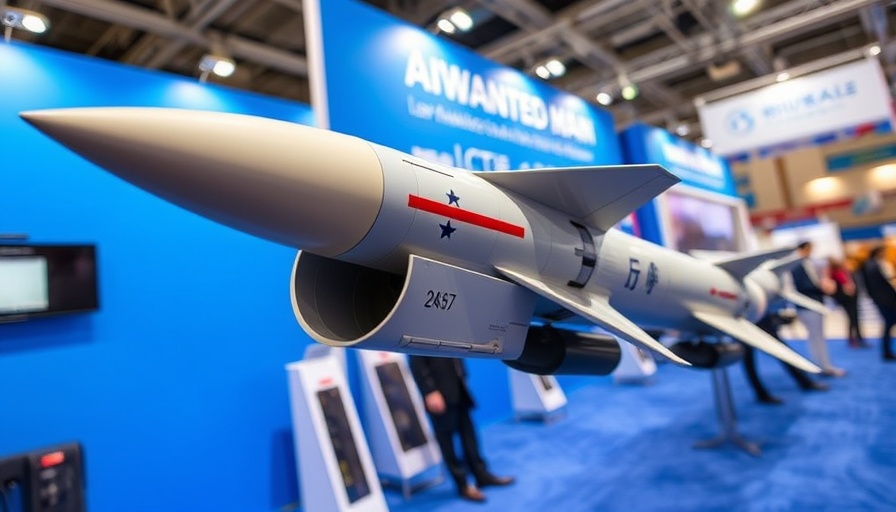
Unpacking Taiwan's Defense Strategies at TADTE 2025
The Taipei Aerospace and Defense Exhibition (TADTE) not only showcases Taiwan’s military innovations but also reflects the island's strategic response to increasing Chinese military assertiveness. As tensions rise in the region, this year’s exhibition features a significant emphasis on asymmetric warfare—utilizing cost-effective weapons that can inflict considerable damage on a more powerful adversary.
Significance of Asymmetric Weapons
Asymmetric weapons are designed to counter superior forces through innovation and cost efficiency. Taiwan’s defense experts argue that these systems could play a crucial role in deterring an invasion from China. For instance, the Chien Feng IV, developed by NCSIST and Kratos, exemplifies this strategy. By operating at high speeds and launching attacks from extended ranges, such loitering munitions enable Taiwan to challenge traditional combat paradigms. Analysts suggest that, like the Ukraine conflict, a reliable supply of low-cost, mass-produced missiles could be pivotal in facing modern threats.
Market Dynamics at TADTE 2025
TADTE 2025 saw a record number of exhibitors, nearly doubling to 490 compared to previous years, demonstrating the growing interest in Taiwan's defense capabilities. More than 51 new products were unveiled, including systems aimed at countering UAV threats and enhancing naval defense. The presence of over 40 American companies indicates a deepening collaboration in military technology, with both nations poised to resist external military pressures.
Taiwan's Production Goals
The National Chung-Shan Institute of Science and Technology (NCSIST) is leading Taiwan's push for greater self-sufficiency in defense manufacturing. The highlight of TADTE was the agreements NCSIST signed, aiming to localize the production of critical defense systems. This includes the mass production of low-cost cruise missiles, with a target price around a quarter of a million dollars each. Such measures are vital for Taiwan's national security strategy, which prioritizes the ability to produce weapons swiftly in times of crisis.
International Cooperation and Challenges
Collaboration with U.S. defense manufacturers is crucial for Taiwan, as demonstrated by the joint development of advanced platforms such as the Barracuda missile series. These not only enhance Taiwan's capabilities but also reaffirm global defense partnerships in the face of mounting regional threats. However, Taiwan faces significant challenges in securing ongoing military support from international allies, especially as geopolitical dynamics change. Defense Minister Dong Jun's remarks at recent forums highlight China’s unwavering stance on Taiwan, indicating the urgent need for robust defense initiatives.
Broader Implications and Future Considerations
The trajectory of Taiwan’s defense strategy points to a new era of military procurement that balances cost with capability. The focus on asymmetric warfare is not just about meeting current threats; it’s about relevant preparedness for a future that may demand rapid response capabilities against technologically advanced aggressors. By investing in adaptable defense systems, Taiwan is positioning itself as a resilient player in a volatile geopolitical landscape.
In conclusion, the lessons learned from TADTE 2025 provide critical insights for other nations facing similar threats. Taiwan's approach presents a model for smaller nations to enhance their defenses efficiently. Understanding these dynamics may inspire other countries to rethink their military strategies and procurement practices, aiming for innovation in turbulent times.
 Add Row
Add Row  Add
Add 




Write A Comment